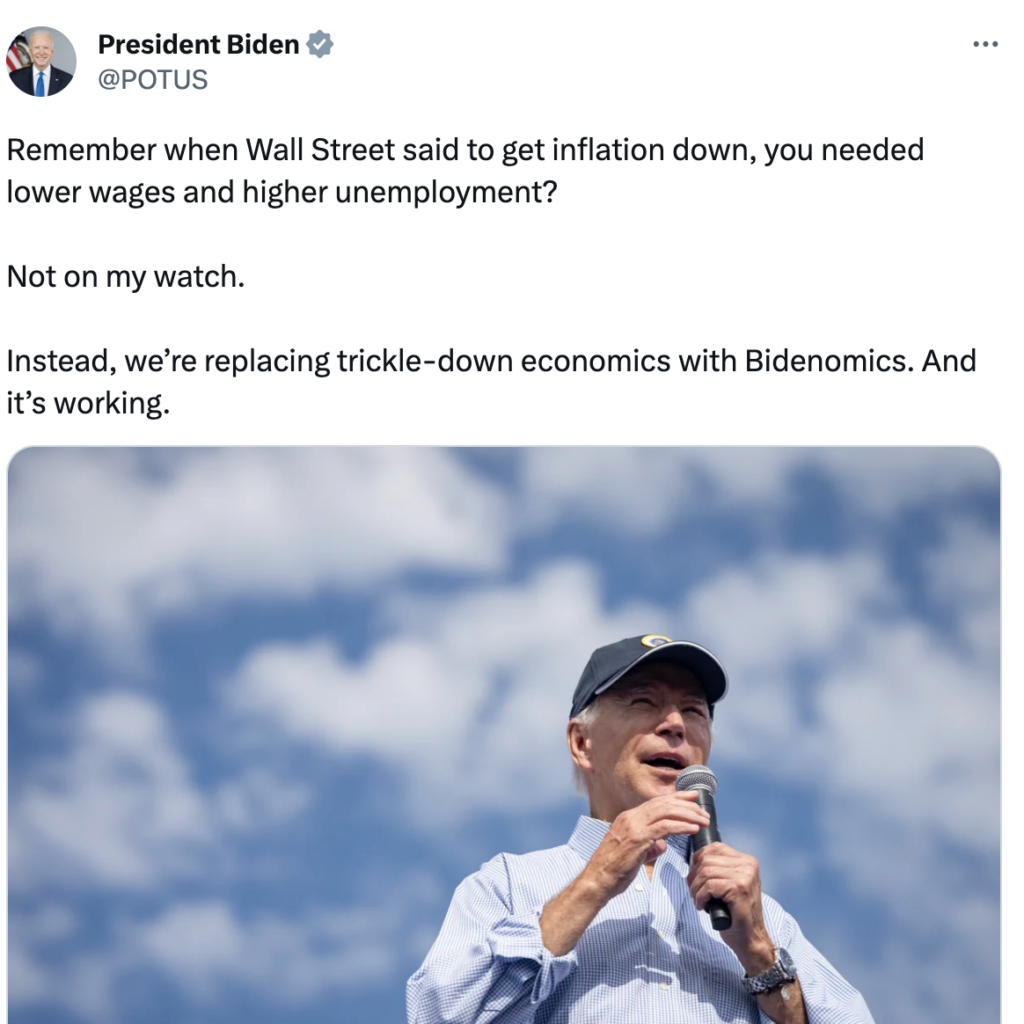I'm still flabbergasted by whatever metrics they're using, to tell me my monthly economic situation is good and getting better.
Clearly you are not listening to the State Run Media Reporting ....
White House press secretary Karine Jean-Pierre
told reporters in June that the administration can “prove” its economic policies, marketed as “Bidenomics,” are working after being asked about a poll that showed only a minority of Americans approve of how the president has handled the economy. While Jean-Pierre continues to insist that “Bidenomics” is a success, citing low unemployment rates and lower inflation, 61% of Americans are
living paycheck-to-paycheck and 75% of U.S. adults
think the economy is in a “fair” or “poor” state.
“If the goal is to help middle class and poor families, there are neither policies or outcomes that bear evidence of that,” Peter Earle, an economist for the American Institute for Economic Research, told the Daily Caller. “But if the objective was to enrich ideologically-aligned interest groups by handing them hundreds of billions of taxpayer dollars, and to increase the reach of government into citizens’ lives, then Bidenomics is working effectively.”
“Americans see what’s happening around them,” Earle said. “They’re paying much higher prices than they were two years ago, interest rates are rising, and they’re probably seeing layoffs and increasing economic hardship in their homes and communities. It’s quintessentially political to tell people not to believe what they see and feel, but rather what they’re being told.”
Biden
signed the American Rescue Plan in March 2021, spending $1.9 trillion on economic relief from the COVID-19 pandemic. The plan included stimulus checks for Americans, debt bailouts for local and state governments and funding for vaccine rollouts.
The president also
signed the Inflation Reduction Act, a focal point of Bidenomics, in August 2022. The law approved roughly $750 billion in new spending, giving $370 billion to green initiatives aimed at combating climate change.
Popular economist Paul Krugman, who was once
slated to make $250,000 as a Princeton economics professor without actually having to teach classes,
said in September that Bidenomics has been good for American workers, “whether they know it or not.”
Krugman wrote in The New York Times that Biden’s economy has been good for American workers’ incomes if one considers wage increases and the “rising number of hours for those employed.” However, Krugman noted that if you asked the average American worker about the state of the economy, they would probably have a negative answer.




